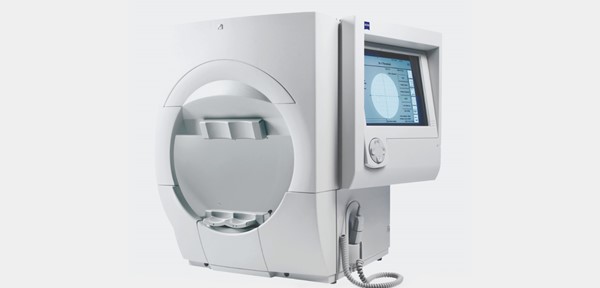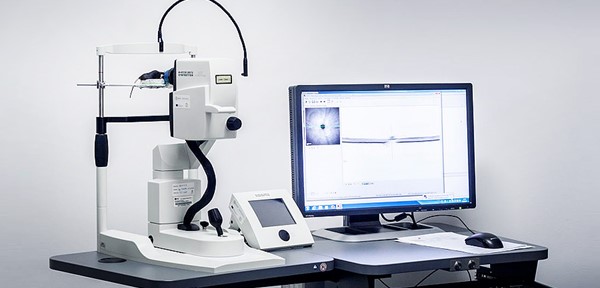Narrow Angle Glaucoma
Narrow angle glaucoma accounts for around 10% of all cases of glaucoma and as with open angle glaucoma leads to damage to the optic nerve and field of vision. The intraocular pressure is usually elevated, but the key difference is that the drainage angle is narrower. This is assessed by gonioscopy looking at the recess between the cornea and iris.
 Drainage angle of the eye
Drainage angle of the eye
Having a narrow angle if it reaches a certain critical degree can increase the risk of developing an attack of acute angle–closure glaucoma, which gives a sudden rise in eye pressure and potentially a permanent loss or damage to the vision. Some people are more prone to develop acute glaucoma because of the anatomical shape of their eye. People who are hypermetropic patients (long sighted) are at greater risk as they tend to have smaller eyes. The lens in the eye become thicker with age and eventually forms a cataract. Increasing thickness of the lens pushes the iris forward and this can make acute glaucoma more likely in somebody with a smaller eye.
In a pre-disposed eye, an episode of acute glaucoma can be triggered when the pupil has dilated. This may happen when for example in the evening in dim light during stress or excitement. Some medicines can trigger acute glaucoma such as eye drops to dilate the pupils, some anti-depressants, some medicine used to treat allergies or stomach ulcers such as Chlorphenamine, Cimetidine and Ranitidine and some medicines used during a general anaesthetic, Ipratropium, Topiramate and steroids such as used in asthma or emphysema. An attack of acute angle closure glaucoma is thankfully rare affecting only around 1 in 1000 people in their lifetime. This is usually around the age of 60-70 and more common in long sighted people and in women. There is a family association with a higher risk of having an attack of acute angle closure glaucoma if you have a first degree relative who has had an attack.
The symptoms of acute angle closure glaucoma are:
- Red eye
- Blurred vision
- Mis-dilated or irregularly shaped pupil
- Pain around your head – headache
- Nausea
- Feeling generally unwell
Narrow angle glaucoma needs to be seen by an eye doctor as an emergency and treated promptly. Provided this treatment is commenced without delay over 50% of cases recover good vision with no long-term effects.
If a narrow angle is found in a patient who has not previously had an episode of acute angle closure glaucoma, then there are treatments available to reduce the risk of developing acute angle closure glaucoma. The narrow angle may be noted at a routine exam with your optician and if you are of extremely high risk you may be referred in for preventative treatment such as a YAG laser iridotomy. Alternatively, there is evidence that removing a bulky lens may create more space in the eye in a procedure akin to cataract surgery. This will also reduce the risk of acute angle closure glaucoma.
Glaucoma Treatments



